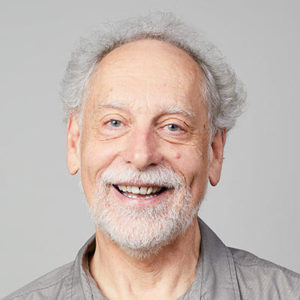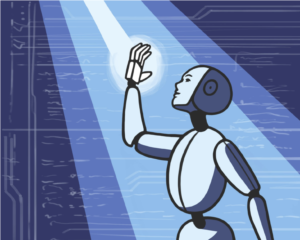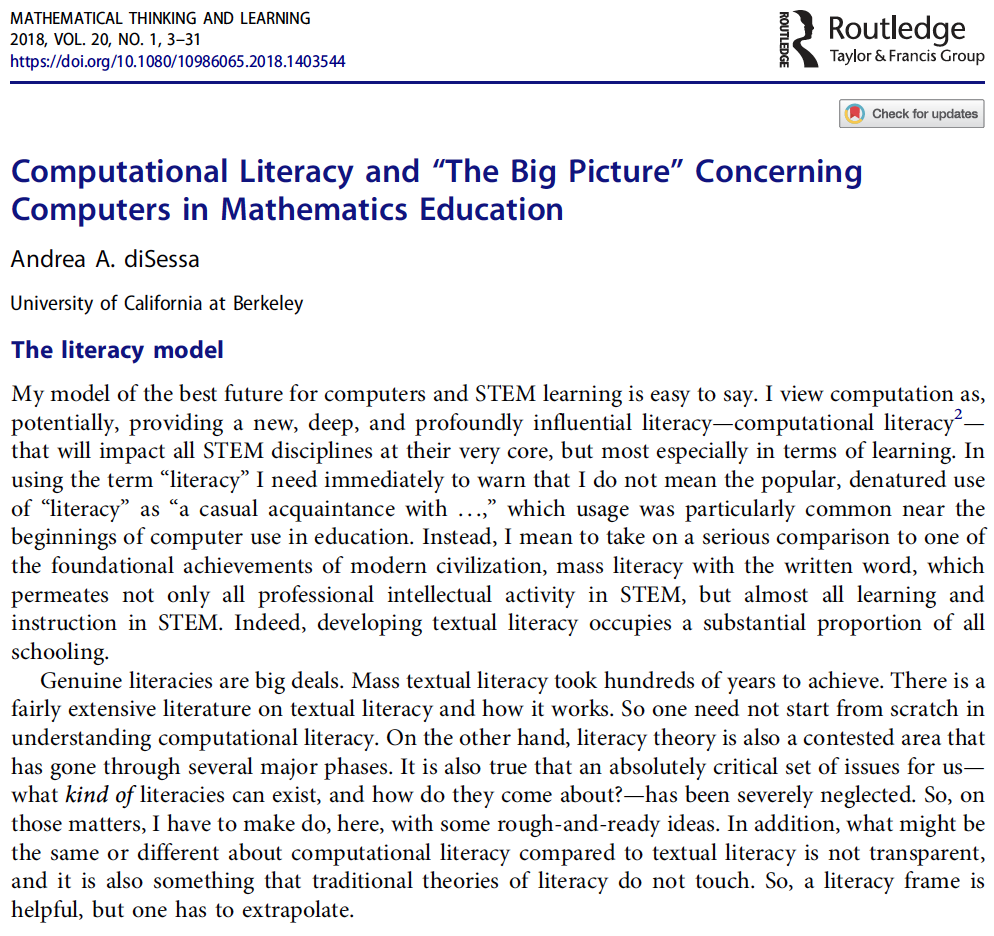Andy diSessa Webinars (15/22 May 2019)
Computational Literacy & Mathematics Education
Timeline of video content
- 0:05 – Introductions
- 5:38 – Presentation outline
- 11:47 – Galileo example
- 15:52 – Algebra as a mass literacy
- 26:08 – Some principles of computational literacy (CL)
- 29:42 – Motion: Gr. 6 example of CL
- 48:09 – A 4th principle of CL
- 50:08 – Vectors: Grade 6 example
- 57:05 – A 5th principle of CL
- 59:22 – Critique of computational thinking
- 1:06:48 – Summary
- 1:09:54 – Q & A
AI in Education
Timeline of video content
- 0:03 – Introductions
- 4:25 – Presentation outline
- 9:35 – History of the first wave of AI
- 15:25 – Deep learning: second wave of AI
- 25:18 – AI as a literacy?
- 27:20 – Third wave of AI
- 30:27 – Genres of AI in education
- 37:41 – Worries
- 40:21 – A thought experiment
- 55:14 – Final words
- 57:30 – CIFAR
- 1:04 – Q & A
Andy diSessa, Berkeley Graduate School of Education
 Corey Professor of Education Andrea diSessa is a member of the National Academy of Education. His research centers around conceptual and experiential knowledge in physics, and principles for designing flexible and comprehensible computer systems. He is the director of the Boxer Computer Environment Project. Boxer is an integrated system that allows non-experts, including teachers and students, to perform a broad range of tasks, including programming. His current work focuses on student ideas concerning “patterns of behavior and control.” Please see http://gse.berkeley.edu/patterns-project
Corey Professor of Education Andrea diSessa is a member of the National Academy of Education. His research centers around conceptual and experiential knowledge in physics, and principles for designing flexible and comprehensible computer systems. He is the director of the Boxer Computer Environment Project. Boxer is an integrated system that allows non-experts, including teachers and students, to perform a broad range of tasks, including programming. His current work focuses on student ideas concerning “patterns of behavior and control.” Please see http://gse.berkeley.edu/patterns-project
Support
- Math Knowledge Network (http://mathnetwork.ca)
- Western University, Faculty of Education (https://www.edu.uwo.ca)
- Social Sciences and Humanities Research Council of Canada (http://www.sshrc-crsh.gc.ca)
- Ontario Research Fund: Research Excellence (https://www.ontario.ca/page/ontario-research-fund-research-excellence)
Webinar #1: Computational Literacy & Mathematics Education
Wednesday, May 15, 7:30-9:00 pm (EST)
“Literacies shift the basic intellectual structure of domains of knowledge along with learning trajectories and societal participation structures – who gets to do what. Concomitantly, a literacy needs a literature. One needs to transcend a representational system by itself, and get to civilization’s expanse of deep and powerful ideas.” (diSessa, 2018)
Questions to consider
- In what ways might a computational literacy transform learning, especially in mathematics? In what ways can we use literacy with text (or, say, with algebra/calculus) as a model to build on? In what ways might computational literacy be essentially different?
- What would be some examples of using computational literacy to get to some deep and powerful ideas of mathematics? What topics might be most favored by a computational literacy and what least? Is this a problem for “coverage,” or an opportunity?
- How can computational literacy afford new and more powerful patterns of student engagement with deep and powerful ideas of mathematics?
- Via what social processes will a true computational literacy be realized? E.g.: (a) Everything changes rapidly these days. Can we “do”computational literacy in a few years? (b) First, we need to convince the scientific/educational community that computational literacy “works” and works better that what we do now? (c) We need to cultivate a grassroots community of advocates and practitioners?
Participation
- To participate please send an email to George Gadanidis at ggadanid@uwo.ca
Suggested Readings
- diSessa, A. (2018). Computational Literacy and “The Big Picture” Concerning Computers in Mathematics Education. Mathematical Thinking and Learning 20(1), 3-31.
- diSessa, A. A. (2000). Changing Minds: Computers, Learning, and Literacy. Cambridge, MA: MIT Press.
Classroom examples (from the Math Knowledge Network archives)
These examples might be helpful as things to point to as we try to better understand what computational literacy is (or is not) and what it affords (or does not afford). Also please bring your own examples to share.
1. Modelling Repeating Patterns in Grades 1-3
- Videos from Grades 1-2, Grades 2-3 and Grades 1 & 5 (use tabs to access): http://mkn-rcm.ca/repeating-patterns/
- White Paper: http://mkn-rcm.ca/wp-content/uploads/2018/05/MKN-white-paper2-May-2018.pdf
2. Modelling Civilization in Grade 3
- Videos from Grade 3: http://eduapps.ca/civilization/
3. Symmetry in Grade 3
- Classroom videos: http://mkn-rcm.ca/symmetry-ct/
4. Grades 4-10 coding resources
- Activities: http://mkn-rcm.ca/brock-u-ncdsb-ct-math-tasks/
5. Grade 10 Math + Computer Studies integrated program
6. Computational Thinking in Tertiary Mathematics Education
Webinar #2: AI In Education
Wednesday, May 22, 7:30-9:00 pm (EST)
 With the increasing progress made by industry in developing AI tools and processes, we are seeing calls to bring an educational focus to AI.
With the increasing progress made by industry in developing AI tools and processes, we are seeing calls to bring an educational focus to AI.
Let’s explore what might be on the horizon.
Questions to consider
We are especially interested in looking at the role of AI in education, both as a tool and as an object of study:
- What are some examples of AI in education?
- How might AI that may transform teaching and learning?
- What mathematics knowledge underpins some of the work on AI, and how does this knowledge mesh with existing curricula?
Participation
- To participate please send an email to George Gadanidis at ggadanid@uwo.ca
Suggested Readings
- Finland initiative to educate at least 1% of the population about AI: https://www.politico.eu/article/finland-one-percent-ai-artificial-intelligence-courses-learning-training/
- Online course on AI from Finland: https://www.elementsofai.com/
- Stephen Hawking on AI: https://www.youtube.com/
watch?v=GozpTxFDnFg - … more coming soon
Classroom examples
- AnImal (AI) Farm in Grade 7: http://eduapps.ca/ai
- More coming soon.
OrganizATION TEAM
- George Gadanidis (Western University)
- Iain Brodie (Western University)
- Chantal Buteau (Brock University)
- Erin Clements (McMaster University / Western University)
- Jeff Cummings (Wellington CDSB)
- Arielle Figov (MKN Coordinator)
- Lisa Floyd (TVDSB / Western University)
- Steve Floyd (TVDSB / Western University)
- Janette Hughes (UOIT)
- Donna Kotsopoulos (Huron University)
- Laura Morrison (UOIT)
- Immaculate Namukasa (Western University)
- Joe Russo (Toronto CDSB)

